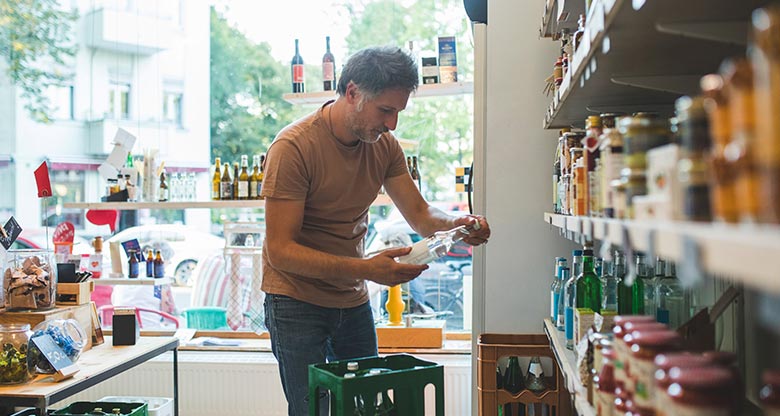A premium on safe spaces
One of the most important aspects of the in-store experience in the coronavirus era is ensuring a safe environment for retail customers and staff. We are already seeing retailers restrict store capacity and implement queuing. Store layouts are also being re-imagined.
As Jemma Caprioli, Chief Customer Officer at Dashing Group, says, “I think coronavirus will accelerate the need for less clutter in stores which could lead to more spacious store environments in the longer term.”
“Retailers need to think about how much stock they have on the floor and how this impacts the customer experience. Having too much can hinder the decision-making or buying process for consumers, so less is more in that respect.”
“Because retailers often have limitations around back of house space and managing the frequency of stock coming through the store, the current demand for more space is likely to lead to fewer items on display and improved inventory systems,” Jemma added.
Applying the new rules
The in-store experience now encapsulates a new set of rules for how customers enter and move around the store. Matt Newell, Partner and Chief Executive Officer at The General Store says that retailers need to be clear and consistent in their application of new measures and be aware of the impact that customers can have on one another.
“If a retailer sets a certain standard at the entry by having customers use hand sanitiser, then a customer needs to touch a door handle in a changing room, that could be viewed as inconsistent if the customer has high personal hygiene standards. Retailers need clarity around the rules and consistency in their standards. If you get either one wrong, it can create friction in the store.”
Bridging the in-store and online experience
During the lockdown period, shoppers increased their reliance on digital channels. Jemma believes that this will have an impact on how shoppers interact with physical stores as they return and presents an opportunity for retailers.
“Bridging the gap between in-store and online is so important. A digital shopping experience is all-being and all-knowing. It knows which items you are viewing and provides suggestions for other things that match, and we are missing that in the in-store experience right now.”
“We are already seeing luxury brands leveraging technology in-store to create more engaging experiences and other retailers will lose customers if they don’t connect their online and offline channels.”
“For example, there is a new technology that allows shoppers online to connect to a staff member in-store and they use an iPad to video chat as they walk around the store, picking up and describing items. They can then tell the customer about other complementary items and it’s a great way of connecting the online and in-store experience.”
“I went on a tour of Asia before the pandemic hit and saw these technology-enabled experiences first-hand. You don’t enter a physical store in Tokyo, Shanghai or Singapore without some form of digitalisation. It’s very different here. So, there is an opportunity for Australian retailers to use technology as an inspirational motivator that gets shoppers to that decision point more quickly.”
An inflection point for store networks
Emerging from a period of online-only shopping has also forced many retailers to examine the performance of their store networks. Matt says that “many established retailers became pure play online retailers for six weeks and they liked it.”
“Prior to coronavirus, a lot of established retailers would chase growth by opening new stores. Their like-for-like growth might not be great, but their underlying growth was propped up by new stores. After running simplified online businesses without the complexity of store networks, many retailers will now think more carefully.”
“We are already seeing retailers take a staged approach to re-opening their store networks. The best performing stores will open first, and, in many cases, we may not see the worst performers open again. It’s likely to be the biggest flushing out of underperforming stores we have ever seen,” Matt added.
Prior to coronavirus, creating in-store experiences that strengthened the connection between shoppers and retail brands was already important to drive customer loyalty and sales. Yet according to CommBank research, only 37% of shoppers said that ‘highly engaging in-store experiences’ were more prevalent than five years ago. Meanwhile, 61% of retailers said they were[1]. Reconciling this gap in perception now has an added dimension and the future of many stores may be on the line.




